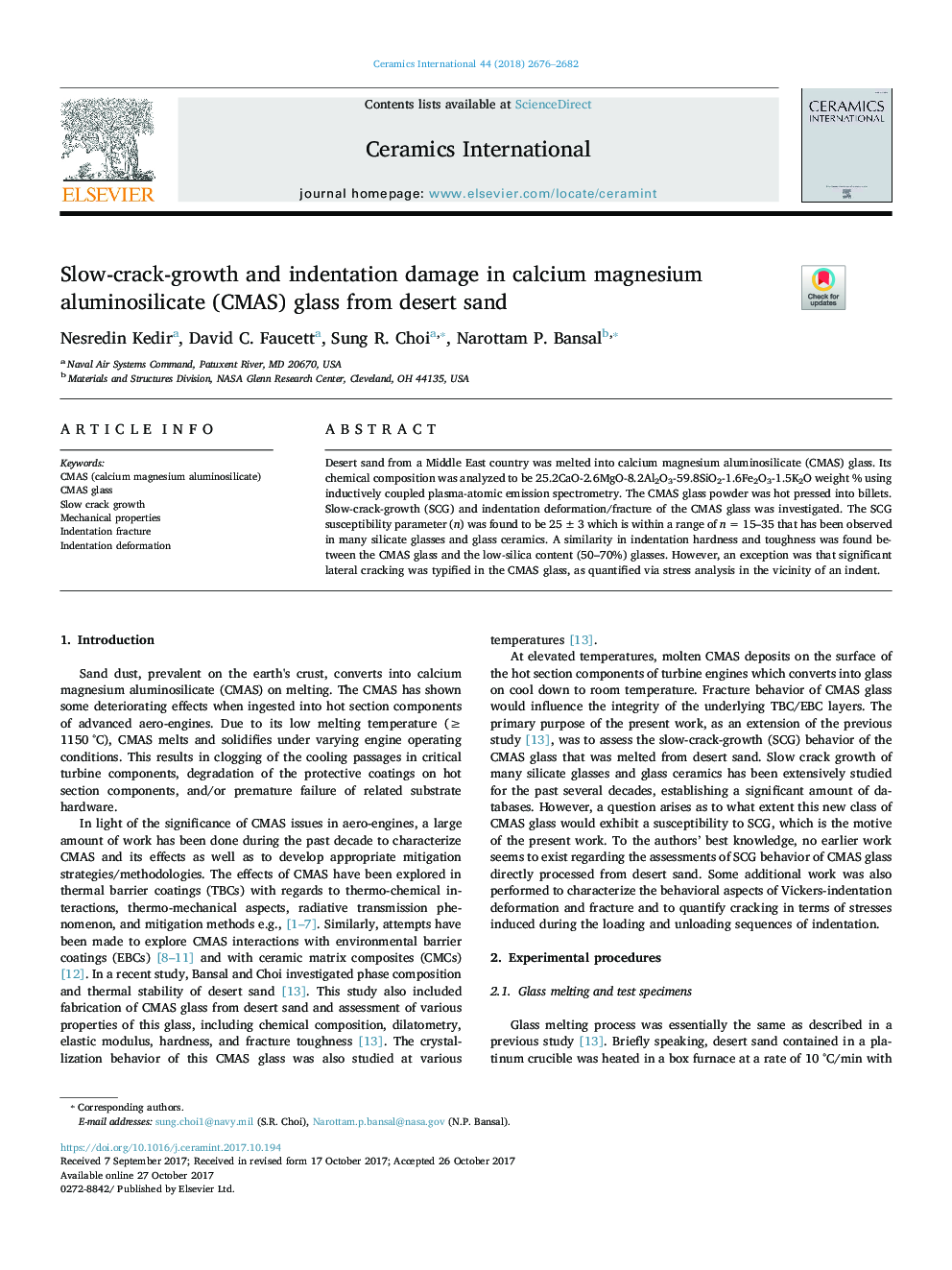| Article ID | Journal | Published Year | Pages | File Type |
|---|---|---|---|---|
| 7888350 | Ceramics International | 2018 | 7 Pages |
Abstract
Desert sand from a Middle East country was melted into calcium magnesium aluminosilicate (CMAS) glass. Its chemical composition was analyzed to be 25.2CaO-2.6MgO-8.2Al2O3-59.8SiO2-1.6Fe2O3-1.5K2O weight % using inductively coupled plasma-atomic emission spectrometry. The CMAS glass powder was hot pressed into billets. Slow-crack-growth (SCG) and indentation deformation/fracture of the CMAS glass was investigated. The SCG susceptibility parameter (n) was found to be 25 ± 3 which is within a range of n = 15-35 that has been observed in many silicate glasses and glass ceramics. A similarity in indentation hardness and toughness was found between the CMAS glass and the low-silica content (50-70%) glasses. However, an exception was that significant lateral cracking was typified in the CMAS glass, as quantified via stress analysis in the vicinity of an indent.
Related Topics
Physical Sciences and Engineering
Materials Science
Ceramics and Composites
Authors
Nesredin Kedir, David C. Faucett, Sung R. Choi, Narottam P. Bansal,
